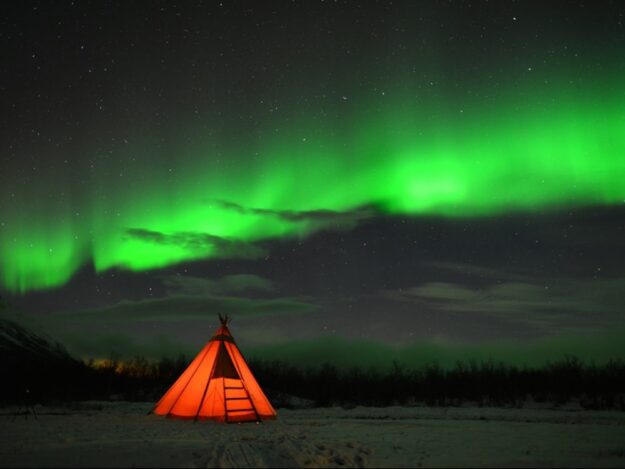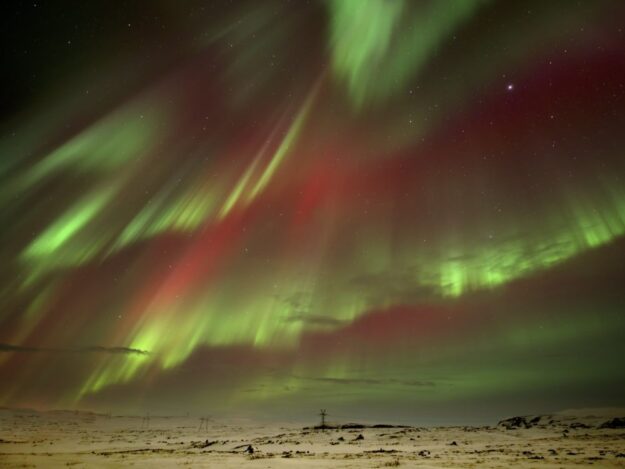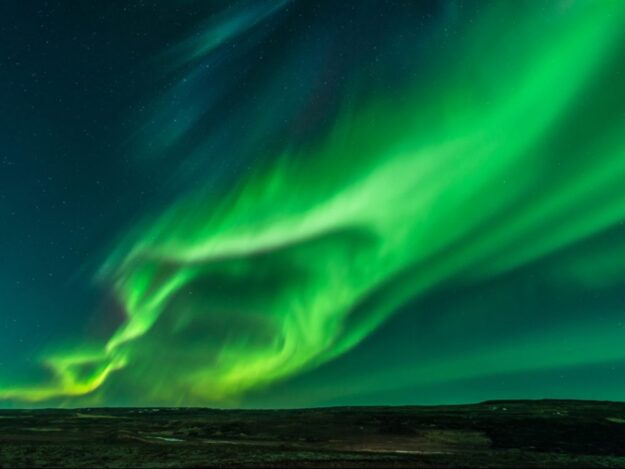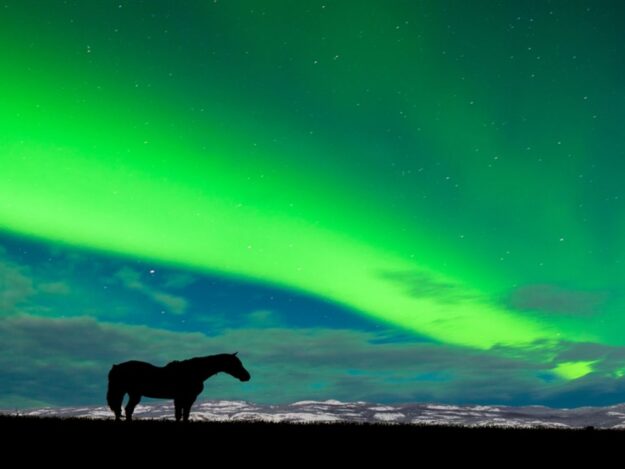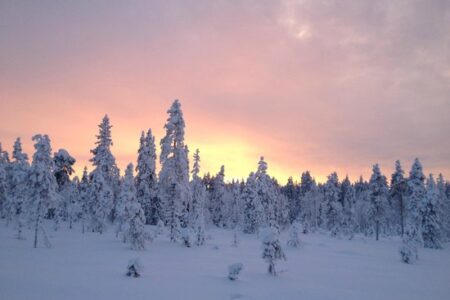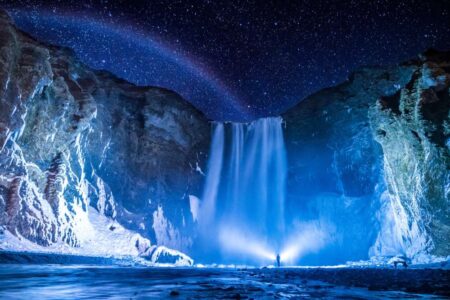The Aurora Borealis – Northern Lights (and the southern hemisphere’s Aurora Australis) are caused by the interaction of the Earth’s magnetic field with the flow of highly-charged particles from the Sun, known as the “solar wind”. Auroras are normally confined to polar regions, which are nearer the magnetic poles.
When the ions from the sun first collide with air particles, each causes a different reaction, and each reaction causes a different color to explode. Neutral nitrogen particles will create a purplish pink color, while ionic nitrogen transforms into a brilliant blue. If an ion crashes into oxygen in a lower altitude, it becomes the most common aurora, a yellowish-green color. If however, it collides with oxygen at a high level it will create the rarest blood red aurora.
The temperature above the surface of the sun is millions of degrees Celsius. At this temperature, collisions between gas molecules are frequent and explosive. Free electrons and protons are thrown from the sun’s atmosphere by the rotation of the sun and escape through holes in the magnetic field. Blown towards the earth by the solar wind, the charged particles are largely deflected by the earth’s magnetic field. However, the earth’s magnetic field is weaker at either pole and therefore some particles enter the earth’s atmosphere and collide with gas particles. These collisions emit light that we perceive as the Aurora.
The lights of the Aurora generally extend from 80 kilometres (50 miles) to as high as 640 kilometres (400 miles) above the earth’s surface.
Winter in the north is generally a good season to view lights. The long periods of darkness and the frequency of clear nights provide many good opportunities to watch the auroral displays. Usually the best time of night (on clear nights) to watch for auroral displays is local midnight.
For our full range of Northern Lights Holidays in Sweden, Norway and Iceland
